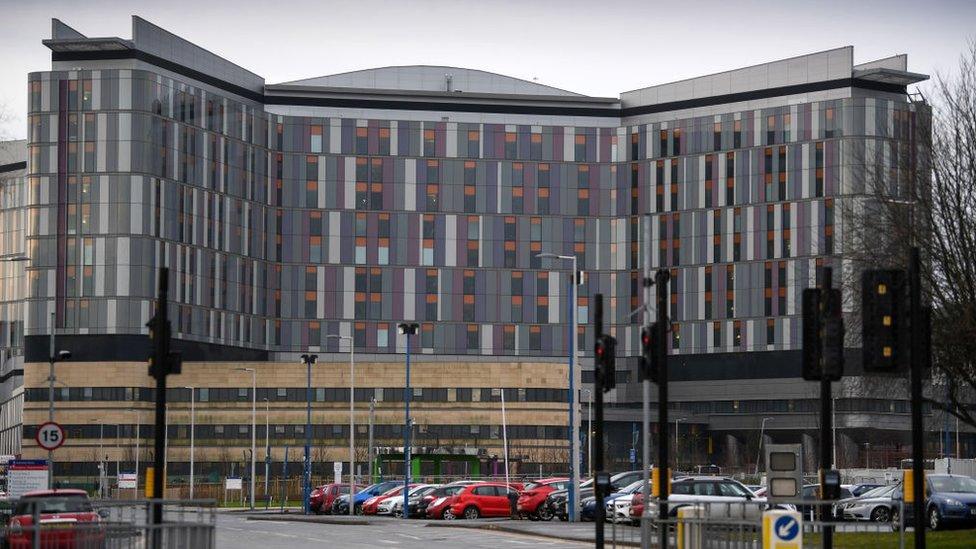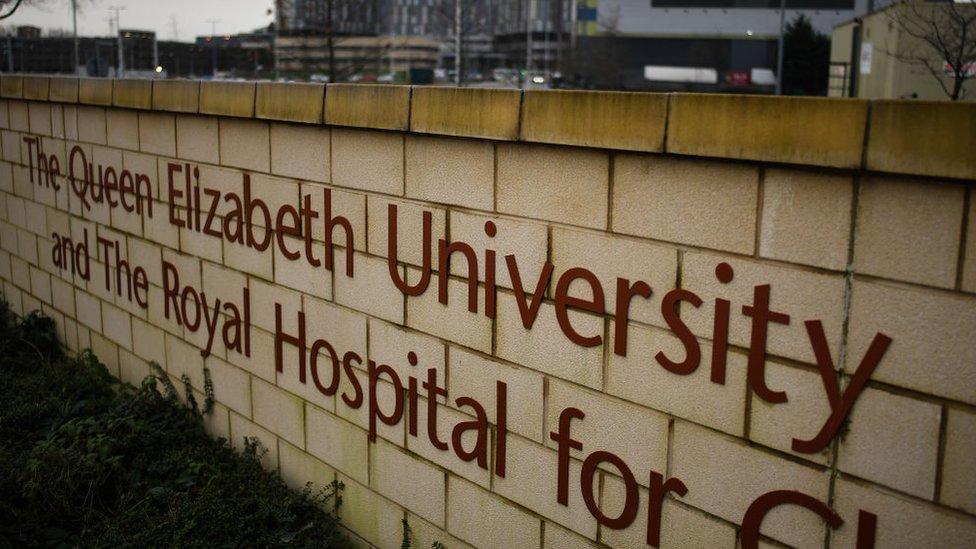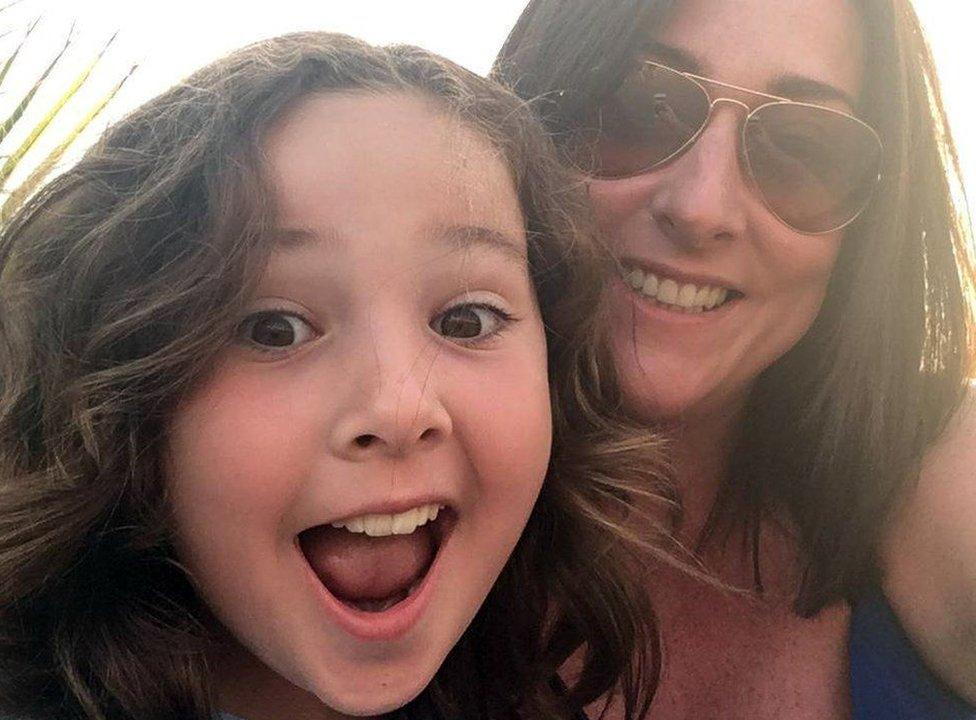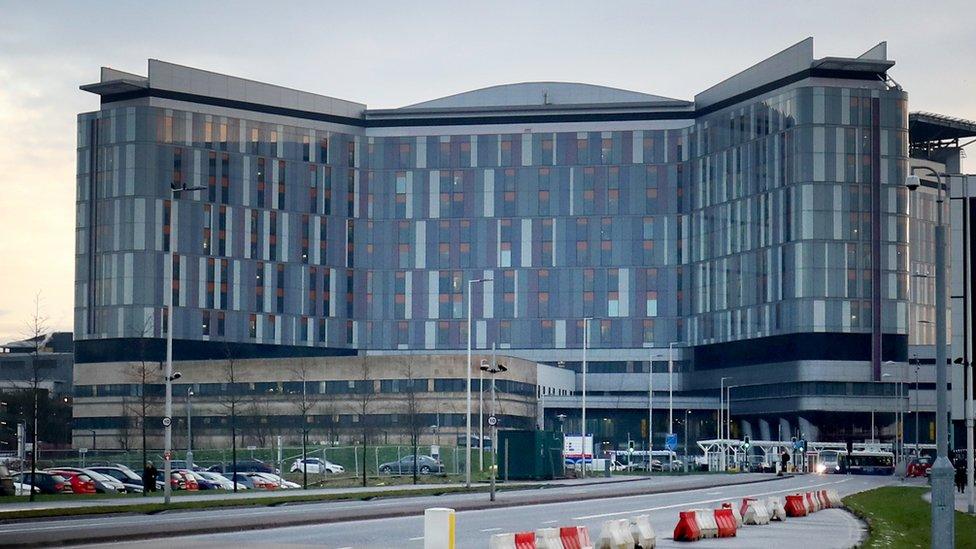Scottish Hospitals Inquiry: 'Unusual' infection numbers at child cancer unit
- Published

The Queen Elizabeth University Hospital campus in Glasgow opened in 2015
A senior doctor has said the number and type of infections at Glasgow's child cancer wards were unlike anything he had seen before.
Dr Dermot Murphy told an inquiry he became convinced environmental factors were to blame.
He was among clinicians giving evidence about infections at the Queen Elizabeth University Hospital campus (QEUH).
NHS Greater Glasgow denies a link between the buildings and infections except in two distinct cases
The QEUH campus, which includes the Royal Hospital for Children, was hailed as a world leading facility when it opened in 2015.
But a series of infection outbreaks and concerns around the water and ventilation systems began to emerge three years later.
Dr Murphy told the Scottish Hospitals Inquiry, external this week he believed there was a link between the environment at the new children's hospital and the infections which led to the closure of the wards in 2018.
The paediatric oncologist said he had never seen the "number and type of infections" in Glasgow's child cancer wards in any other of the hospitals he had worked at.
He said: "I'd worked at the Royal London Hospital, at Great Ormond street, and the Royal Marsden Hospital, and had not seen in those hospitals the types and variety of environmental gram negative infections that we were seeing in the new children's hospital in Glasgow."

The design and construction of the QEUH campus and its impact on patients are being examined
Dr Murphy told the inquiry that, while it was hard to get data on infection rates elsewhere, he discussed the situation with colleagues in other hospitals.
"The reflection we were getting back from those conversations was that we were seeing far more infections in Glasgow than similar units were around the UK," he said.
"We were seeing more infections than colleagues were in Scotland and in the UK, and when we were at European meetings people were saying we were seeing more infections than they were."
He told the inquiry that after the wards closed in 2018, he became anxious about the whole hospital estate.
In written evidence to Lord Brodie, he said that every clinical area the department had moved to had "proved to have defective build issues".
He told the inquiry's senior counsel Alister Duncan KC: "I was anxious that wherever we moved to within the children's hospital or the adult hospital, we would uncover similar problems to the ones that we were leaving behind."

Milly Main died after contracting an infection at the Queen Elizabeth University Hospital campus in Glasgow
A number of families have raised concerns about deaths of patients at the QEUH campus - including that of 10-year-old Milly Main who was being treated for leukaemia but died after contracting a rare bacterial infection.
Two other patients died after contracting a fungal infection known as Cryptococcus.
Earlier in the week the inquiry heard from leading paediatric cancer specialist Prof Brenda Gibson.
She established the unit in the old Glasgow children's hospital at Yorkhill 30 years ago and has led the department since then.
She told the inquiry that she had refused to approve plans for the unit at the new hospital because they were not provided with the requested facilities.
"We had been promised a like-for-like unit in a flagship hospital and it certainly wasn't a like-for-like unit," said Prof Gibson.
She said staff were shocked to find that there were no air filters in the transplantation rooms, and waiting for them to be fitted led to delays in the treatment of some cancer patients.
According to Prof Gibson, staff became increasingly concerned that they were seeing unusual infections in children and more often than expected.
She said drains, sinks and taps were cleaned repeatedly, yet the infections kept coming back.
Stressed and confused
Prof Gibson said that it was difficult for staff to communicate with families who were already very stressed and confused.
She told the inquiry that she had never had an explanation from senior managers at NHS Greater Glasgow and Clyde about whether the hospital environment was responsible for the infections or not.
"There are two versions of what's happened," she said.
"There is a real environmental problem [or] there's no environmental problem at all. I still don't know which is true."
She added: "The responsibility for providing a safe environment for that treatment to be delivered lies, within our view, with the health board led by the chief executive."
On Wednesday, nursing staff gave evidence about the impact on patients of the upheaval involved in constantly moving patients for cleaning.
They also spoke about having to move children to unsuitable wards in the adult hospital.
Senior charge nurse Emma Sommerville said some had gone to their union to express concern around the children being in an unsafe environment.
Next week the inquiry will hear further evidence from frontline clinical staff, as well as managers closely involved in the department.
NHS Greater Glasgow and Clyde says it continues to work with the inquiry, and senior executives are expected to give evidence next year.
The inquiry will also examine issues that affected the new Royal Hospital for Children and Young People in Edinburgh
Problems with the ventilation system were only discovered days before it was due to open in July 2019.
- Published9 May 2022
